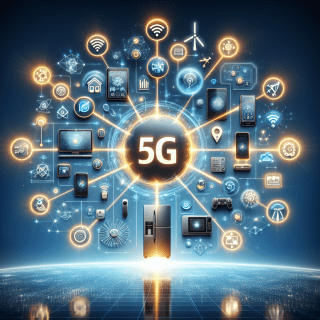Exploring the Benefits of 5G mmWave Technology
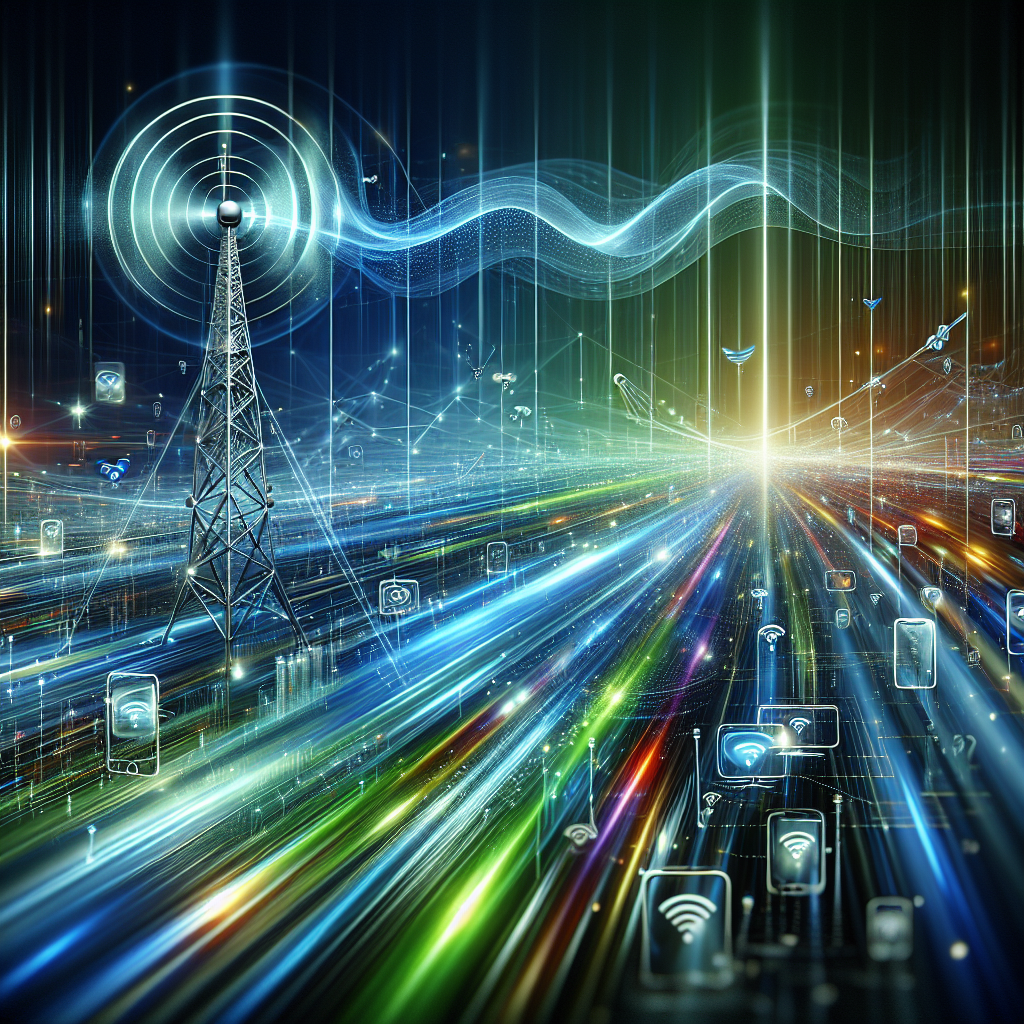
5G mmWave technology is a groundbreaking advancement in mobile communications that will change the way we connect, communicate, and experience technology. What mmWave stands for is millimeter wave full new, it extends beyond the 4G LTE frequencies, out of sight from what we use today, to the super-high-frequency spectrum — between 24 GHz and 100 GHz. The technology ensures unprecedented benefits of high data speeds, low latency, hyper connective capacity and much more for numerous devices. This is where 5G mmWave is increasingly growing as a critical solution to congestion challenges in the context of growing population in urban areas along with growing demand for real-time data transfer. Health care can be revolutionized, transportation can look vastly different from what it is today, and fun and gaming industries are another option — from transcontinental remote presense surgery to driver-less vehicles, to outterworldly virtual reality experiences too. At the threshold of the 5G era, spurred on by mmWave technology, the journey is poised to unveil a wave, or in fact waves, of unlimited possibilities, reshaping the limits of digital innovation.
Understanding 5G mmWave Technology
Learning the Ins and Outs of 5G mmWave Technology When we say radio, we are talking low frequencies and when we say microwave, we are referring to higher frequencies and above it; the millimeter band of the electromagnetic spectrum is from 24 GHz to under 100 GHz, which is substantially higher than normal cellular frequencies. This high frequency ranges make it possible to use bandwidth to among the highest data rates, undoubted exceeding a few girth per second. The shorter length millimeter waves, 30 to 300 GHz, require high-bandwidth and don’t travel as far while the lower-frequency waves travel farther but not as far as the low &mid-frequency bands previously used for cellular. Shorter wavelengths also cause higher propagation losses to the point sensitive beamforming becomes necessary.
But mmWave signals have a more limited range and can be easily obstructed by obstacles such as buildings, trees, and weather. This is achieved by deploying a small cell (low-power, short-range base station) dense network to provide contiguous and comprehensive coverage, even in areas where general capacity constraints [limit] the standard network rollout. 5G mmWave harnesses beamforming and network slicing advancements to provide the ultra-reliable, low-latency communication needed for autonomous vehicles, smart cities and advanced healthcare solutions. This level of deep insight into 5G mmWave shows its revolutionary capability dispite it being fraught with challenges.
Definition and Overview
The 5Th generation of mobile networks ( 5G ): The 5G mmWave technology means the millimeter wave spectrum, This technology delivers a major boost from the frequency bands in previous generations and its presence in the 24 GHz to 100 GHz frequency range. The defining feature of mmWave technology is that it is capable of moving copious amounts of data at a blistering pace—often well over 1 Gbps—making it perfect for data-slurping activities like 4K video streaming, VR, and all those IoT devices that will likely one day fill your home. Furthermore, mmWave provides ultra low latency crucial for real-time services such as autonomous driving and remote surgery. However, mmWave signals — for all of the great things they do — are quickly stopped by buildings, trees, or other elements, which is why the only way we can guarantee high-quality coverage outdoors is through extremely dense small cell network. The upshot of the preceding paragraphs is clear: 5G mmWave technology is more than an incremental improvement— it is a foundational, ground-breaking step into a future where a huge amount bit of data is travelling rapidly among every digital system on the planet.
Frequency Range and Bandwidth
These are the basic frequencies and bandwidth of 5G mmWave that have redefined spectrum of wireless communication. Taking mainly the band between 24 GHz and 100 GHz, mmWave has much higher frequencies than the sub-6 GHz bands used in previous generations. This freaky high frequency lets in huge bandwidths thru, say over 1 Gbps of data goes using it at a time.
The wideband is a boon for applications that demand high data throughput as it is in the case of U-HD (ultra high definition) 4K video streaming, augmented and vitual reality rendering (AR & VR). In addition, the wide frequency spectrum allows for more connections to operate simultaneously and ensure the capacity and decrease latency of the network. This is essential when it comes to smart cities, IoT ecosystems, and autonomous vehicles that require real-time data exchanges. There have been range and signal penetration challenges with higher frequencies, but beamforming and small-cell deployment have technologies today to solve these problems in the mmWave area, turning 5G mmWave into a revolutionary technology in the coming years.
Key Differences from Previous Generations
5G mmWave tech is a massive step change from previous technologies, like 4G or 3G, in speed, capacity and latency. 5G mmWave utilizes frequency bands between 24 GHz and 100 GHz as opposed to lower frequency bands (below 6 GHz) from previous generations. This higher frequency will allow far higher data transfer rates, at multi-gigabit per second speeds, well in excess of the 1 Gbps max of 4G LTE. Moreover, mmWave technology allows to significantly increase the density and capacity of the network, enabling it to serve more and more devices and users at once. This is important for high-demand environments such as stadiums and urban cities. Moreover, as we wrote in Faster With 5G, 5G mmWave also enables ultralow latency, typically under 1ms, for real-time applications such as autonomous driving, augmented reality and remote surgery. These improvements are a quantum leap compared to what previous generations of mobile networks could offer, crucial as 5G mmWave are meant to what underpins the next-generation of technology and connectivity.
Enhanced Connectivity
5G mmWave or simply mmWave technology stands out for its ability to provide extremely high data rates with a large todo bandwidth, due to the high frequency range of the millimeter wave spectrum (generally, 24 GHz and 100 GHz). This spectrum is high frequency which allows it to facilitate much faster data transfer speeds than any technology to come before it. Upgraded bandwidth help maintain ultra-low latency and allows for much higher device density making it possible to connect thousands of devices at once without resulting in network congestion. It solves the problem in sparsely populated Qi urban areas and bandwidth-demanding locations, such as stadiums and large events sources with a lot of downloads.
In addition, 5G mmWave enables ultra-reliable, low-latency communication (URLLC), which is critical for deterministic applications such as autonomous driving, remote surgery, and real-time industrial automation. It also helps in improving the performance of Internet f things (IoT) device giving a high-speed connectivity experience and enhancing the complete networking. As a result, it can add depth for users to download files faster, stream on-demand media in real-time, and step up mobile communication, basically reshaping the digital background and creating a fertile ground for new services and applications.
Faster Data Speeds
5G mmWave is a game changer in the way we interact and utilize mobile data as it brings incredible data speeds. With support for 5G mmWave, which uses millimeter-wave frequencies — usually in the 24 GHz to 100 GHz range — 5G mmWave delivers a massive increase in bandwidth compared with the sub-6 GHz frequencies used in previous generations of wireless technology. This means data speeds of more than 1 Gbps, which will allow near-instantaneous streaming of 8K and other bandwidth-hogging video, blazing-fast downloads of huge files, and touch-the-button-and-face-unlock-starts being quick enough to feel like magic. This makes it possible to greatly enhance the performance of real-time gaming, virtual/augmented reality, and other highly interactive, cloud-based workloads. 5G mmWave also facilitates near-instantaneous communication of less than 10 milliseconds in many instances, which enables rapid response times that improve user engagement, performance and experiences for an array of digital activities. Furthermore, the developed data speeds will contribute to the expansion of IoT (internet of things), handling more new connected devices with as little disruption as possible; thereby facilitating intelligent, integrated environments. 5G mmWave technology revolutionizes everything from mobile data transmission standards to just about every digital communication and interaction in our lives.
Reduced Latency
Lower latency is one of the most important advantages that 5G mmWave technology provides, and it gives substantial power to run different types of applications and devices efficiently. Standard 4G networks feature a millisecond of about 50 milliseconds, but 5G mmWave can reach a low level of 1 millisecond. This significant decrease is critical for any application with requirements for real-time data communication and immediate responsiveness, such as autonomous driving, smart manufacturing plants, and remote surgeries. With lower latency, communication between devices is smoother and more reliable, data can be processed quickly while also facilitating faster decision-making. For example, in the gaming world, lower latency allows for near-instant response times, giving players that tiny edge they need to compete, or the sense of full immersion they want to truly enjoy their games. A similar thing occurs in virtual and augmented reality (VR/AR), where reduced latency eliminates motion sickness and improves the overall user experience by guaranteeing smooth and natural interactions. In the end, the latency reduction provided by 5G mmWave technology is going to transform industries that rely on real-time data to be as efficient and innovative as you can imagine.
Higher Capacity for Devices
5G mmWave technology excels at providing this increased capacity to devices, a critically important feature in today’s super-connected world. First, traditional cellular networks are ill-suited to handling congestion, particularly in areas with very high population density like cities where many devices are trying to use bandwidth at once. 5G mmWave, on the other hand, works on unusually high frequencies — usually between 24GHz to 100GHz — and helps it to serve a multitude of connections in parallel. The same high-frequency spectrum is offering broad bandwidth and can support loads of devices at a time without down speeding or underperforming.
Second, greater capacity enables more seamless connections and provides lower latency, which is critical for applications requiring real-time communication such as autonomous driving, remote surgeries, and augmented reality. The added bandwidth also enables the Internet of Things (IoT) to grow in the range of billions of wirelessly connected devices including promises of smart cities, industrial automation, and the connected home. Put simply, the higher capacity of 5G mmWave technology has come into its own as the need for constant connectivity expands to more devices.
Real-World Applications
5G mmWave technology real-world applications are radically transformative across sectors in terms of ultra-high-speed, low-latency, and large bandwidth potential. In healthcare, mmWave can help with cutting-edge telemedicine solutions like real-time remote surgeries that are enabled through robotic instruments. In smart cities it can be used in enormous networks of IoT devices to help traffic monitoring, maintain public safety via high resolution surveillance, and for better energy management as well. For automotive, the technology is critical for the development of more efficient and safer transportation systems in the AV era thanks to its ability to exchange data extremely quickly, helping deliver the levels of vehicle-to-everything (V2X) communication required by AVs. Finally, in the entertainment industry, mmWave powers augmented reality (AR) and virtual reality (VR), providing a smooth and real-world way to interact with users. In short, 5G mmWave will impact enterprises across every sector enabling un-precendented connectivity between the physical and digital worlds.
Smart Cities and IoT
At 5G NWFPHub everything we do takes advantage of 5G mmWave technology, which sits right in the heart of the future of smart cities and the Internet of Things. This high frequency technology can lead to excellent data speeds and drastically faster response times. In smart cities, this allows for real-time data processing and extremely fast systems, that are important for things like traffic control, public safety, and environmental monitoring. For example, traffic lights that are interconnected with autonomous vehicles can immediately relay messages to decrease traffic congestion and improve road safety. Likewise, IoT devices such as smart meters and smart surveillance systems rely on the robust connectivity of 5G mmWave. These devices transmit a large volume of data, and with rapid and safe communication enabling municipal administrators to make informed, real-time decisions. In addition, the high-bandwidth mmWave bands enable dense groups of IoT devices to connect and operate, even in the tightest urban areas. Therefore, they are essential for meeting the futuristic ideal of smart, connected, and sustainable cities.
Augmented and Virtual Reality
With the speed and ultra-low latency, Augmented Reality (AR) and Virtual Reality (VR) are the applications that can benefit the most from 5G mmWave technology. With abet of MMwave, running into gigabit-per second, you will get rid of lag specially causing issues in high quality and more immersive AR/VR Content. This is essential for applications from gaming and entertainment to training simulations and remote assistance, which rely on real-time interactions.
This higher bandwidth and lower latency enable much more lifelike and responsive AR and VR experiences, with faster load times and less lag. For examplein a VR environment, the environment can be rendered in real time with high accuracy, allowing the user to react more naturally and will sketch evokative. AR also is useful in navigation, education, and maintenance, where the accurate superimposition of digital information on the physical world can produce an important improvement in applications. In short, 5G mmWave powers a wave of immersive new experiences that open up additional possibilities and benefits for AR and VR technologies.
Healthcare Advancements
5G mmWave technology is bringing the influence of low-latency and high speed of 5G technology to the healthcare sector and will completely change the patient care and medical operation landscape. Also compatible with its ultra-high-speed connection and minimal latency, which is needed for seamless real-time data transmission in remote monitoring and telemedicine applications. For instance, now patients can do elaborate diagnostics and treatment of complex diseases from home, while healthcare professionals keeps a watch on vital statistics and accordingly adjusts treatment. In surgery, 5G mmWave enables advanced robotic systems so that a surgeon thousands of miles away can completely and precisely control a procedure. Furthermore, the fast and reliable data transfer enables the handling of large amount of medical data facilitating medical research and personalized medicine developments. In addition, the large-scale deployment of Internet of Things (IoT) devices in hospital environments supports successful patient outcomes by enabling continuous connectivity and communication between different healthcare devices to deliver on-time synchronized care. So in conclusion, 5G mmWave technology has the potential to increase the level of healthcare delivery and accessibility.
Challenges and Limitations
5G mmWave technology can provide near-perfect data speeds and latency, but it does have some limitations and challenges. One of them is its range; mmWave signals do not travel nearly as far as lower frequency bands, often necessitating a line of sight, and they do not penetrate obstacles like buildings and foliage. This requires a higher concentration of small cells, which can be expensive or difficult to roll out — especially in rural or low population density areas.
But the issue today is that this signal can be affected by things like rain, moisture & even something as benign as a pillar, hence resulting in a loss of signal also known as signal attenuation. This high frequency also cause a higher energy consumption (with resulting sustainability and operational costs which includes wider 5G mmWave deployment).
There are also regulatory hurdles — mmWave spectrum availability and deployment are not uniform around the globe, which can muddy the waters for global standardization and rollout. These challenges need to be resolved in order to take full advantage of 5G mmWave technology.
Limited Range and Penetration
On the one hand, 5G mmWave technology can provide very high speed and low latency, on the other hand, the restrictions on distance and penetration are a big challenge. mmWave rules of the road: the expansive millimeter wavelengths, which tend to fall above 24 GHz, open up a massive bandwidth pipeline. However, higher frequencies have shorter wavelengths, meaning they cannot go as far, or through walls, buildings and vegetation. As a result, the realistic reach of mmWave signals is limited to a few hundred meters, and thus are best suited for areas that are densely populated like urban areas or line-of-sight open spaces. This requires a dense network of small cells and base stations to have enough coverage over the area, leading to higher infrastructure cost and complexity. While its current limitations are important to consider, strategically deployed, 5G mmWave has the potential to drive industries into the future with super-fast streaming, real-time applications, and better connectivity for Internet of Things (IoT) devices, unlocking a whole world of potential innovation.
Infrastructure Requirements
Evaluating 5G mmWave technology advantages means that one must understand its deployment infrastructures. High-end throughput, operating in super-high frequency bands (such as 24 GHz and above): the mmWave provides high bandwidth and the fastest data rates possible, but it also has serious infrastructure concerns. As mmWave signals have a much shorter range and can only penetrate obstructions for a limited distance, a very high density of small cells, often just a few hundred meters apart, is required to enable continuous coverage. This translates into an order of magnitude increase in base stations with the deployment of advanced beamforming and Massive MIMO (Multiple Input, Multiple Output) techniques for more efficient signal focusing and directivity. Even further, ensuring this infrastructure plays well with current 4G LTE systems and prepares for future advancements takes real orchestration and investment. Additional complexity is injected into the deployment process due to municipal cooperation required to secure sites, regulatory hurdles, and addressing aesthetic or layout elements for urban deployments. However, in spite of these challenges, the speed and low time lag in the connectivity advantage of mmWave have made it a cornerstone technology for future communication networks.
Potential Health Concerns
The introduction of 5G mmWave (millimeter wave) technology has stirred rumors of health issues like any other emerging technology. RF Frequency: As against the low-to-high RF frequencies range of its predecessors, the RF frequency of 5G mmWave are way higher — from 24 GHz to 100 GHz. The concern was that these higher frequencies could lead to even more exposure to electromagnetic fields (EMFs). Experts point out that long-term exposure to such waves could be harmful to the human body, increasing the risk of cancer and other illnesses. Yet, the scientific consensus thus far is that being non-ionizing, these waves do not carry enough energy to break molecular bonds or directly damage DNA, which means they are indeed unlikely to do so. Even the regulatory bodies such as the FCC and WHO keep a very close eye on the emerging research data too. This review is a bit long, but its purpose is to provide bookends: the existing science has yet to pinpoint any definitive health risks, and 5G networks have rolled out at a speedy pace, so there must be comprehensive long-term research to both ensure the public safety and address the long-term effects with reinforcement of new findings.
So what have we concluded?
The commercialization of 5G mmWave technology represents a paradigm shift in the telecommunications industry, which brings with it a bevy of advantages that are poised to reshape connectivity and user experiences. Using high-frequency millimeter wave spectrum, 5G mmWave technology provides a radically faster, lower latency and higher capacity network. These features will be critical in enabling the explosion of usage of mobile data services and new capabilities like augmented reality (AR), virtual reality (VR) and the internet of things (IoT). With its increased capacity and resiliency, mmWave can enable sectors such as healthcare to benefit from more responsive telemedicine, and smart cities to leverage real-time data to optimize infrastructure and services. Although there are challenges, such as inferior signal range and significant costs associated with deploying infrastructure, the long-term benefits emphasize the importance of 5G mmWave technology, as a crucial step towards creating next-generation communication networks and a fruitful and sustainable future for humanity.
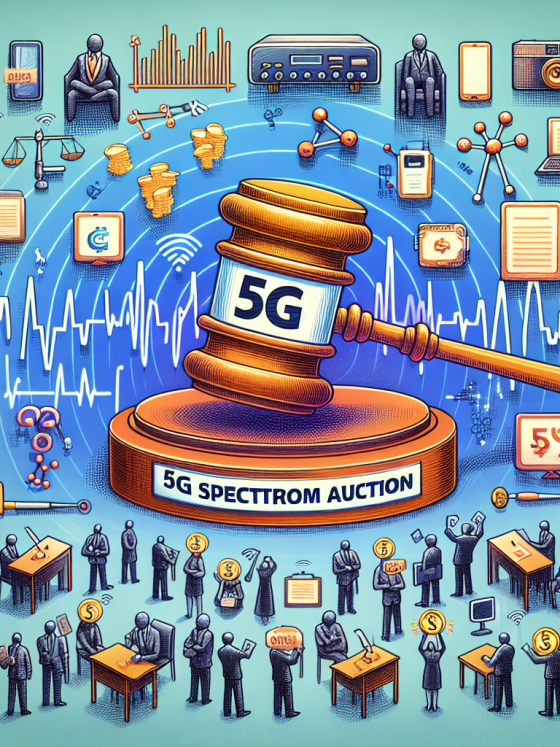
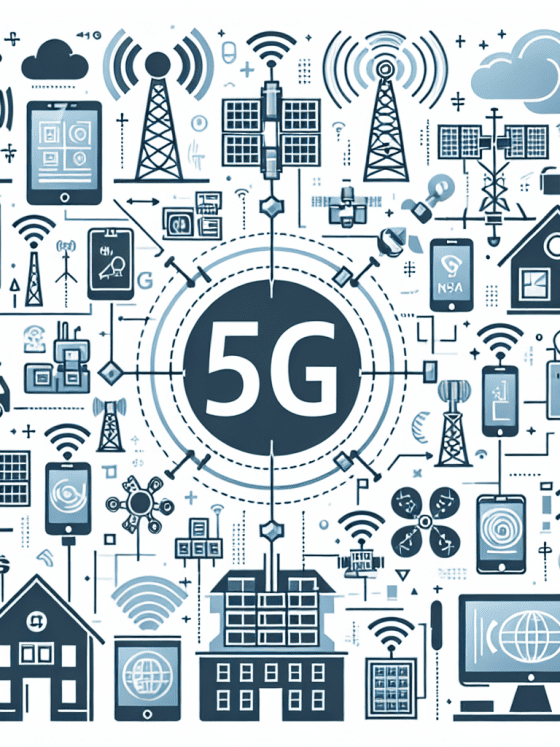
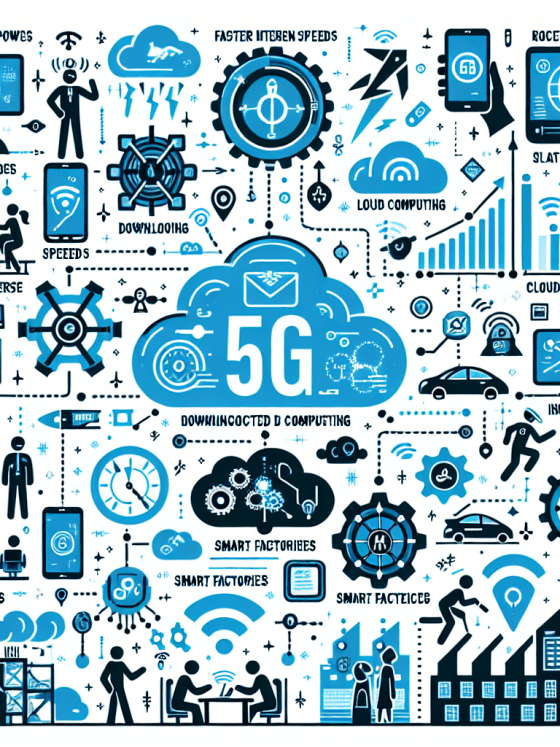
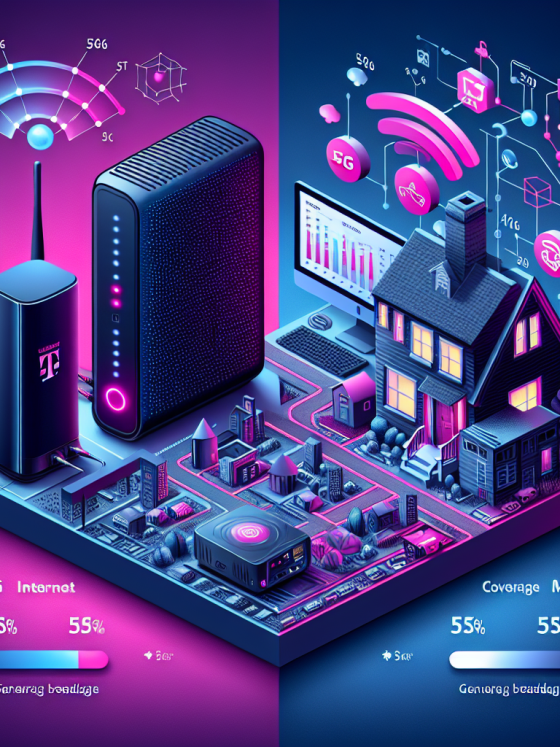
![Introduction to 5G Technology [PPT]](https://5ginnovations.top/wp-content/uploads/2024/07/introduction-to-5g-technology-ppt-560x747.jpg)
![Complete Guide to 5G Technology [PDF]](https://5ginnovations.top/wp-content/uploads/2024/07/complete-guide-to-5g-technology-pdf-560x747.jpg)

